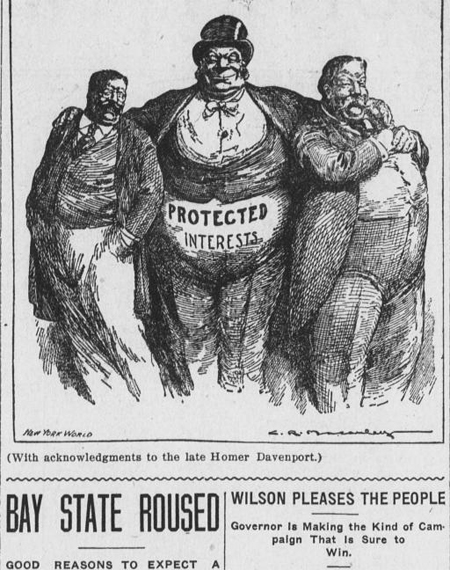Analyzing Primary Sources: Identifying Bias in Presidential Election Newspaper Coverage
In a Teaching with the Library of Congress blog post, Deborah Thomas, program manager for the National Digital Newspaper Program at the Library of Congress, discusses Helping Students Read Between the Lines: Identifying Bias and Attitude in Newspapers for the Presidential Election of 1912.
With three major candidates, rather than the traditional two, the 1912 election became a varied debate between special interests, government oversight, and the value of individuals in society.
While each candidate spoke out for himself in speeches and public statements, newspapers and their editors played a significant role in shaping public attitude toward each candidate, often through political cartoons, descriptive language, and even page layout.
National Council for Social Studies (NCSS) members can access Thomas’s original article, which identifies four newspaper items she selected, from the November/December, 2015 issue of Social Education. If you are not an NCSS member, use the links below to access select articles or to explore election coverage from May 1 to November 4, 1912 in order to select other sources.
- Taft Answers Col. Roosevelt (Logan, Utah) The Logan Republican 09 May 1912
- Many Women Delegates and Advocates of Equal Suffrage Applaud Roosevelt Appearance and Speeches at Convention (Wilmington, Del.) Evening Journal 08 Aug. 1912
- Protected Interests political cartoon and articles about Woodrow Wilson (Meade, Kan.) Meade County News 24 Oct. 1912
- On the Eve of the Election (Eureka, Nev.) The Eureka Sentinel 02 Nov. 1912
- 1912 Election historical newspaper front-page coverage: Wilson, Taft Roosevelt May 1 – November 4, 1912
When reviewing newspaper coverage, be sure to click the link to the newspaper name to gain background information and historical context.

For help with analyzing historic newspaper items, review the analysis guides linked to below.
- Analyzing Primary Sources: Learning from Newspapers
- Analyzing Primary Sources: Learning from Political Cartoons
For each primary source you select, challenge students to identify the elements of bias and determine the perspective of the particular newspaper and how it might have influenced voters.
After students have analyzed the 1912 newspaper items, have them work in groups to find newspaper coverage (print or digital) of a contemporary presidential election, analyze the sources for bias, and then compare and contrast their historical and contemporary findings. Be sure to have students investigate each newspaper they use (see tips and links below).
Students then can communicate their newfound understandings from the historical and contemporary primary source analyses through a short written essay, a digital timeline, or a print or digital poster.
Newspaper bias research tips & links
- Online, look for an about or mission page.
- Try a search with a newspaper name + mission statement or editorial policy.
- Read the bios of the newspaper publisher(s) and editors.
- American Society of News Editors: Ethics newspaper ethics policies/codes
- How do you tell when the news is biased? It depends on how you see yourself June 27, 2012 Nieman Lab, Nieman Foundation for Journalism at Harvard
- QUOTUS: The Structure of Political Media Coverage as Revealed by Quoting Patterns Vlad Niculae, Caroline Suen, Justine Zhang, Cristian Danescu-Niculescu-Mizil, Jure Leskovec, Proceedings of WWW, 2015
- How To Detect Bias In News Media FAIR, Fairness & Accuracy In Reporting
- Media Bias Chart Ad Fontes Media
Related resources
- Wilson Chosen President, Roosevelt Leads Taft (New York [N.Y.]) New-York Tribune 06 Nov. 1912
- Finding Resources: Chronicling America Historic Newspapers Advanced Search Tips
- Today in History posts: background and primary sources
- Primary Source Learning: Presidential Elections

